Pratham Books at 'Let's Read! E-book Hackathon' in Cambodia
Posted by Yamini Vijayan on September 25, 2017Over the last couple of years, our team at Pratham Books has been focussing on creating simple and engaging picture books that explore STEM (Science, Technology, Engineering and Math) concepts. There is a dearth of interesting information books for early readers in India - especially across Indian languages – and we have actively been trying to bridge that gap. Within two years, we have created around 300 multilingual STEM books (available for free on www.storyweaver.org.in), and also set up STEM libraries around the country.
Having had such a strong focus on STEM, we were delighted to be invited by The Asia Foundation to participate in their e-book hackathon in Phnom Penh, Cambodia, which was aimed at creating openly-licensed STEM books in their local language. Like in India, there are very few children’s books in Cambodia that explore STEM topics imaginatively, and the hackathon was a step towards reducing that gap. Over two days (Aug 19-20, 2017), several local writers, illustrators and designers collaborated to make picture books that were centred around STEM topics. The ‘Let’s Read E-book Hackathon’ was also an attempt at identifying young professionals in the publishing sector, and nurturing their skills.
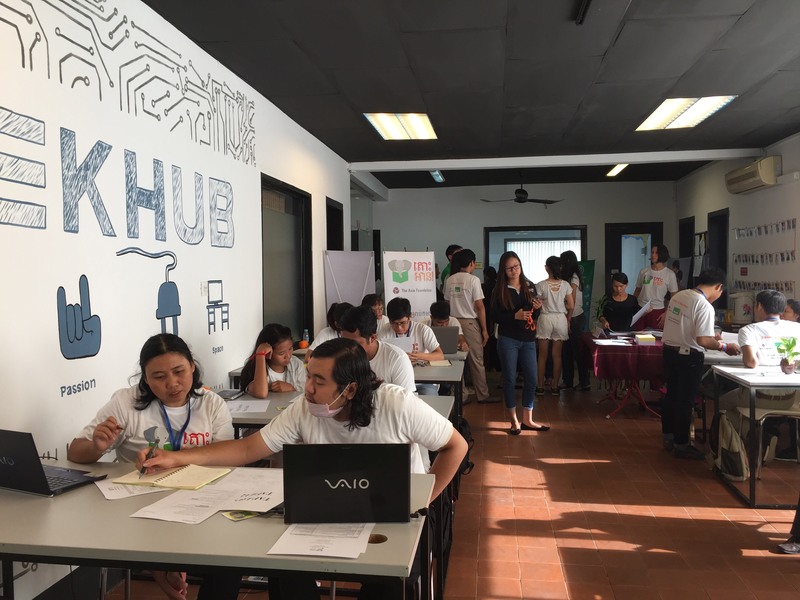
My role, as an editor from Pratham Books, was to offer editorial guidance over the 2-day event. I got the opportunity to discuss some of the key observations that we had made at Pratham Books while creating STEM-based picture books. In essence: what are the crucial things to bear in mind while creating STEM books for early readers, and what works. Here's what Melody Zavala (Director, Books for Asia) said about the hackathon, "The Asia Foundation uses 'e-book hackathons' to drastically reduce the time and resources needed to produce beautiful, illustrated children’s books on topics missing from the commercial market. We were thrilled to draw on Pratham Books’ experience with STEM titles. In Cambodia, only 3 percent of university students choose to study STEM subjects, according to the Ministry of Education, Youth & Sport. We hope this can be changed by stimulating interest at a young age through fun storybooks."
It was fascinating to watch writers and illustrators work so closely, constanly exchanging ideas and refining the narrative as they progressed. We watched as illustrators brought characters to life, developed storyboards along with their writers, and sketched eye-catching book covers. While the foundations of the book were being laid out, many fundamental questions were tossed around, which eventually helped each story evolve: Is the the title too revealing? Did the perspective of each illustration make sense? Is the illustration merely reflecting the text, or is there scope for additional detail?
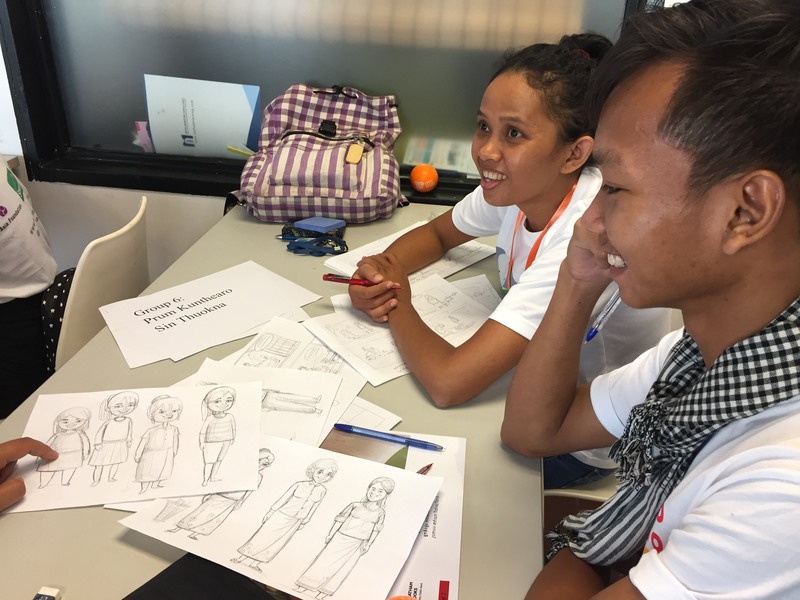
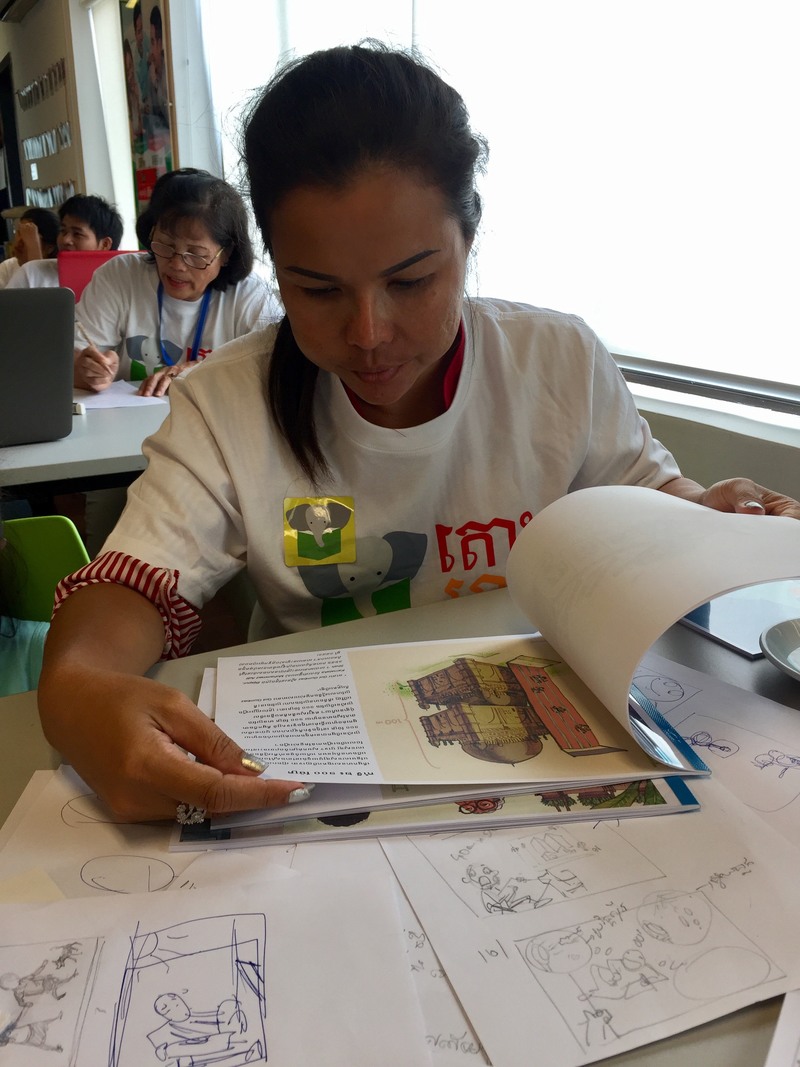
Interacting with an enthusiastic group of writers, editors, illustrators and designers gave me plenty of time to reflect on the entire book-creation process, and I returned home feeling rather inspired and rejuvenated. Helping create simple and fun STEM books at Pratham Books has been both challenging and full of discovery, so it was gratifying to be able to share those experiences with others who are also trying to make reading more inclusive. It was also heartening to see some of the Pratham Books titles being distributed at the event and that too, in their local language! The Asia Foundation team had translated several of our titles into Khmer. As a multilingual publisher, nothing gives us more joy!

The 8 local-language books that were created during the 2-day Hackathon will soon be available for free on Let’s Read! - a digital platform that empowers underserved communities in Asia to build digital libraries in their own languages.
You can read more about the STEM hackathon here.
This post was written by Yamini, a Consultant Editor at Pratham Books who represented Pratham Books at the 'Let's Read! E-book Hackathon' in Cambodia.
Be the first to comment.Taking Friendship and Curiosity to Classrooms
Posted by Remya Padmadas on September 07, 2017Zeba Imtiaz, Assistant Editor, Pratham Books writes about her experience at a recent storytelling session at Citizens High School, Bangalore.
We recently accompanied Roopa Pai, author and editor of a formidable number of STEM books, on a story telling session at Citizens High School in Bangalore. The STEM books have been written and created with support from Oracle, and the event was organised with the help of our partner organisation - Mantra4Change. The intent of these sessions is to bring creators and readers together to read stories, play games, and most importantly, learn more from each other.
Last weekend found us at the gates of the school, listening to the chirpy voices of the only other bunch of humans who can be as excited as us about a working Saturday morning – school going children. Citizens School, located on Davis Road, Bangalore, is an English medium school for children from low income families, and has a building for the primary section, and another building down the road for the senior kids.
Roopa had chosen to read ‘How Old is Muttajji?’ to a class of 6th graders in the senior school building. This is a story about two enthusiastic twin detectives trying to deduce the age of their great grandmother from various events in her life. And we decided to go along with ‘Same Same or Different’, a story of a sparrow and a snake who try to show their parents they can be friends despite their obvious differences, for a class of 4th graders.
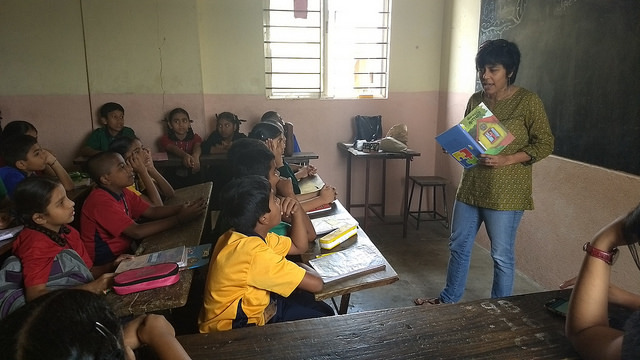
In Grade 6th, Roopa had 35 kids on the edge of their benches wondering along with Putta and Putti what is their Muttaji’s real age. Gathered in their ancestral home in Mysore, the twins used History, Mathematics and General Knowledge to come to the exact birthday their great grandmother was celebrating! The kids were amused, intrigued and fascinated by the interesting bits of history spread through the book and the twins’ investment in cracking the clues. After the story, Roopa quizzed the children on Indian history. The class was divided into groups and their knowledge on India’s history and culture was tested. There was a lot of competition and guess work in the air (not to say noise!) and the session ended on a high with all the energy from the children!
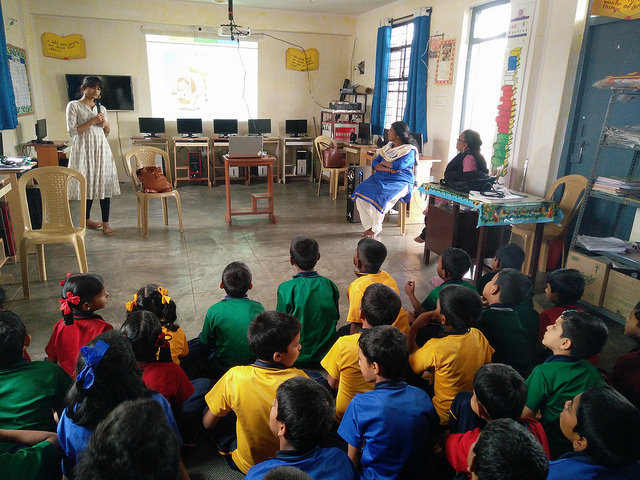
We projected and read out the story ‘Same Same or Different’ to the very excited class of 4C in a charming library on the sunshine-filled terrace of the school. The colourful characters, the emotions, and the very real problem of your friend not being approved of by your parents, made the story come alive for the kids and us. After some impassioned reactions to the parenting skills of Mama Sparrow and Papa Snake, we moved onto our activity for the day. The kids partnered up with whoever was seated next to them, and were given coloured pens and activity sheets. The activity sheet had a venn diagram, exactly like the one Sparrow and Snake use in the story. The kids talked to their partners about their hobbies, favourite foods and games and colours, and birthdays, and filled in what was common to both of them, and what was different. We then counted our ‘same-sames’ and ‘differents’ and talked about whether that affected our relationships, and whether that was even an important thing to consider.
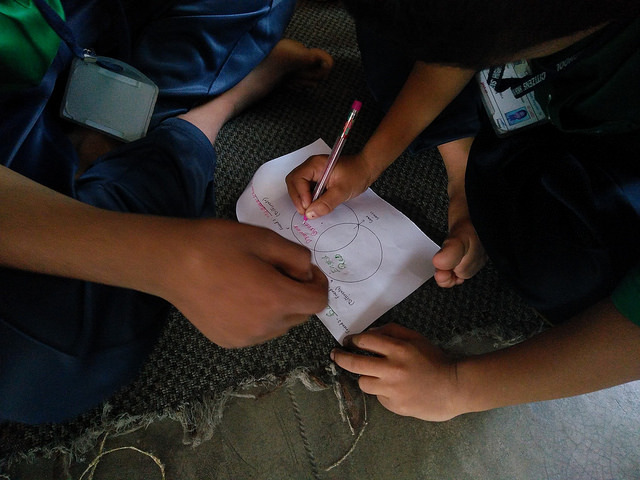
After multiple photographs, viewings of activity sheets, and thank yous, we ended our session with many learnings on how kids view their friendships and parental relationships.
You can see more pictures from the sessions on the StoryWeaver Flickr Account.
Be the first to comment.In conversation with writer, editor Payal Dhar
Posted by Remya Padmadas on July 04, 2017Payal Dhar is a writer and editor. She writes on computers, technology, books, reading, games and travel, and has written on sport in the past. She also writes fiction for children and young adults, and has a number of books under her belt. You can read more about her on her website: http://writeside.net. Payal edited a number of titles from our set of STEM books, and we caught up with her about her experience.
You commissioned and edited picture books that explored science, technology and engineering topics. As an Editor, how did you make these stories appealing for early readers?
Well, it’s probably fairer to say that we tried our best to make them appealing for young readers—whether we succeeded or not is quite another story. I was lucky to be able to entice a bunch of enthusiastic, eperienced and talented writers to work with, who understood what we were trying to achieve and were fully on board with it. That really made my work easy. The illustrators also played their role in making the stories well rounded and entertaining. I think that what we were all (writers, illustrators, editors and you good folks at StoryWeaver) completely clear about from the start was what we didn’t want, that is, no lessons disguised as stories. The rest was (relatively) easy.
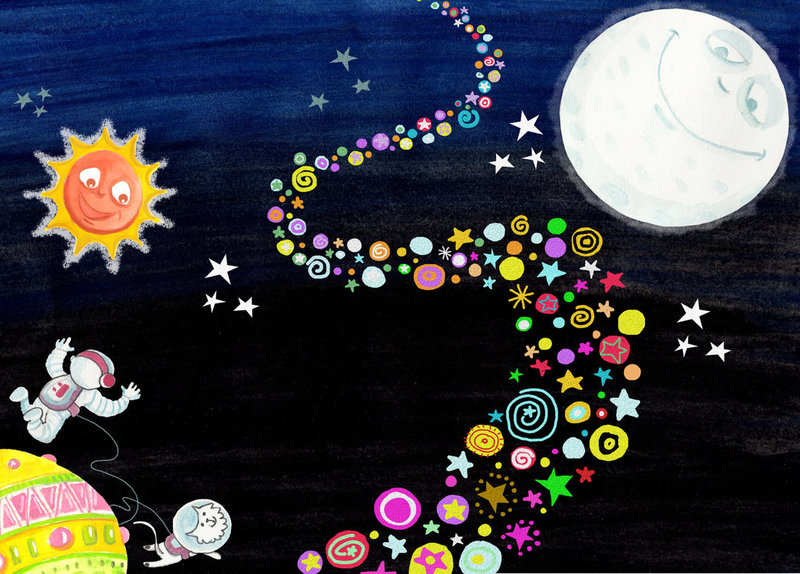
What did you enjoy most about the process?
Figuring out a way to stick to a subject or broad theme without being that aforementioned lesson-disguised-as-story. The ones I enjoyed most were what I call the ‘fictionalised non-fiction’, especially Roopa Pai’s Bonda and Devi, Anil Menon’s Manikantan Has Enough and Richa Jha’s Gul in Space.
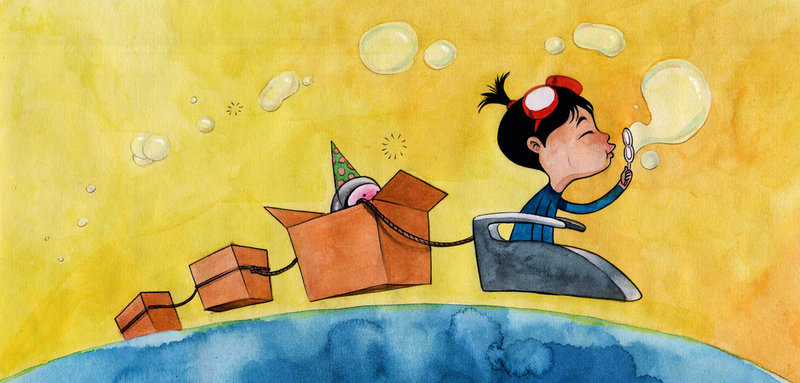
What were the challenges?
In the first year of commissioning I did struggle with finding a balance between keeping things simple and not making them simplistic because of the particular demographic that Pratham Books caters to. I couldn’t exactly say that I’ve figured it out since, but it has certainly become a bit clearer. The other challenge, of course, that always crops up in projects of this sort, was dealing with difficult authors. But that was a very small minority, so no blood was shed. :)
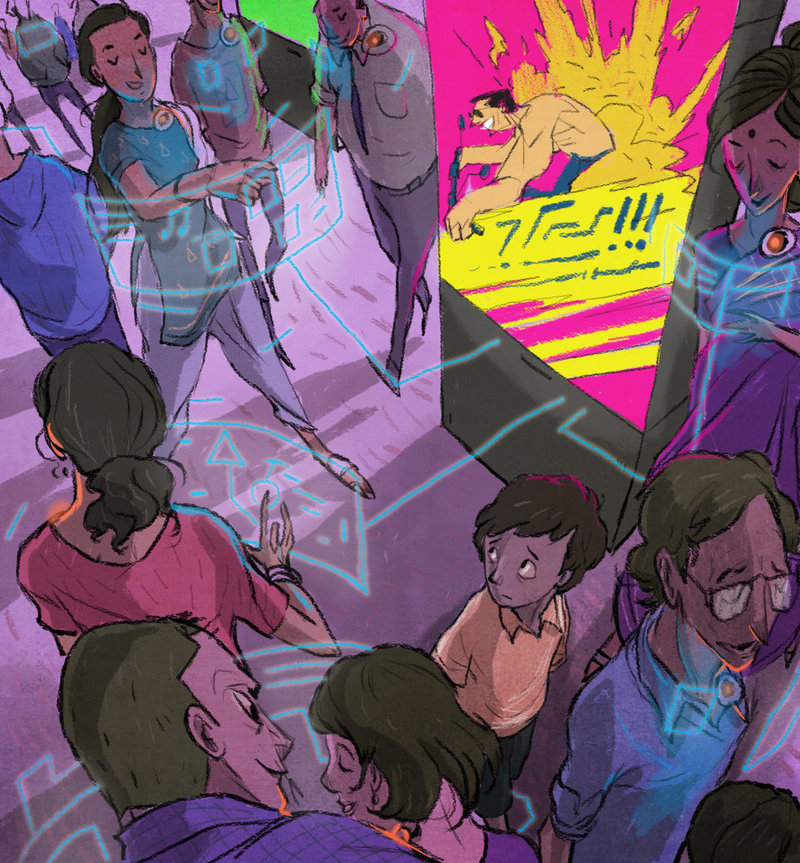
Which are your favourite STEM books for children?
Among others, Esther Porter’s Peeking under the City; the Nick and Tesla books by Bob Pflugfelder; and David Macaulay’s The Way Things Work.
The books that you’ve worked on are so diverse in themes, style and structure. Tell us a little about working with so many different writers and your approach as an editor.
I was pretty privileged in working with writers who were already pretty experienced—you could say I had it easy in that regard—so there was little or no hand-holding required. Most of the writers understood the brief immediately and came up with brilliant ideas of their own. Most of them were able to self-reflect and improve on their own work as well, and this was critical in the revisions. All in all, despite a few roadblocks, I had a pretty uncomplicated time of it.
Read our STEM titles in English and a range of Indian languages for free on StoryWeaver.
Be the first to comment.